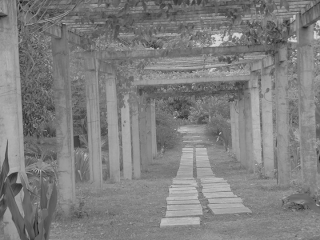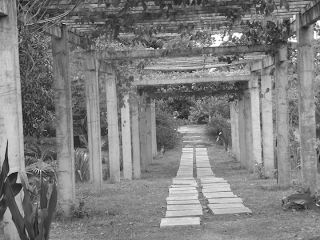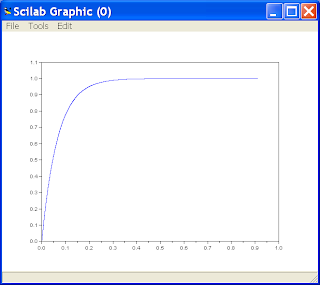I've chosen this picture:

and I ran the following code in Scilab:
stacksize(10000000);Basically what this code does is it loads the image into scilab, then it gets the image's normalized histogram and CDF. Then, it interpolates in order to get the y values in the image's CDF. After that it interpolates once again in order to get the grayscale value having this CDF value in the desired CDF. All the pixels in the image are backprojected and replaced by the x-values of the desired CDF.
A = gray_imread("C:\test1.jpg");
B = tabul(A, "i");
B1 = B(:,1);
B2 = B(:,2);
size(A);
s = 540*720;
B2norm = B2/s;
B2cumsum = cumsum(B2norm);
A1d = A(:);
yCDF = interp1(B1, B2cumsum, A1d);
xdesired = interp1(B1, B1, yCDF);
Aedited = matrix(xdesired, [540, 720]);
imwrite(Aedited, "C:\test1modified.png");
In this case, the desired CDF is a line with slope = 1, that is, its PDF is just a uniform distribution. Executing the code above, I get:
It is noticeable that the modified image has a higher contrast than the original. The light colored pixels seem to become lighter and the dark pixels seem to become darker. It also looks like that the "gray fog" over the original picture has been removed. The image is called histogram equalized image because we have modified its histogram such that every gray level the original image possess now have equal probability. Thanks to this, the picture is now brightened up a bit. :)
Also, the CDF of the enhanced image is a straight line and that was our desired CDF. Note that there's a small horizontal segment. This is because in the histogram of the original image, there's a range of grayscale values where no or very little pixels possess. This can also be seen in the modified PDF.
Next, I tried the technique on different CDF's. The first one is normal distribution: (mean = 0.5, std = 0.1)
 histogram of normal distribution
histogram of normal distribution CDF of normal distribution
CDF of normal distributionThe code was slightly changed:
A = gray_imread("C:\test1.jpg");
B = tabul(A, "i");
B1 = B(:,1);
B2 = B(:,2);
size(A);
s = 540*720;
B2norm = B2/s;
B2cumsum = cumsum(B2norm);
A1d = A(:);
y = grand(1, s, 'nor', 0.5, 0.1);
C = tabul(y, "i");
C1 = C(:,1);
C2 = C(:,2);
C2norm = C2/s;
C2cumsum = cumsum(C2norm);
yCDF = interp1(B1, B2cumsum, A1d);
xdesired = interp1(C2cumsum, C1, yCDF);
Aedited = matrix(xdesired, [540, 720]);
imwrite(Aedited, "C:\test1modified.png");
And the resulting image is:
 Histogram manipulated image
Histogram manipulated image Original image
Original imagePersonally, I don't think using the histogram manipulated image is of better quality than the original image; it looks more hazy and less contrasted than the original. This is because for the normal distribution, most of its elements are concentrated near the mean and the standard deviation used here is quite small, meaning the pixels are concentrated around a range of graylevel values, which explains image's low contrast.
Like our first case, the histogram and CDF of the modified image resembles the desired one:
 histogram of modified image
histogram of modified image
 CDF of modified image
CDF of modified image
Like our first case, the histogram and CDF of the modified image resembles the desired one:
 histogram of modified image
histogram of modified image CDF of modified image
CDF of modified imageNext, I tried the exponential distribution:
 Histogram of exponential distribution
Histogram of exponential distribution
 CDF of exponential distribution
CDF of exponential distribution
 Histogram of exponential distribution
Histogram of exponential distribution CDF of exponential distribution
CDF of exponential distributionAnd the result is:
 original image
original image
 original image
original imageThe manipulated image appears a lot darker than the original image because due to the exponential distribution, the pixels are concentrated at the left of the histogram, meaning there are now more pixels having darker values.
And the histogram and CDF of the modified image are:
 CDF of manipulated image
CDF of manipulated image
And the histogram and CDF of the modified image are:
 CDF of manipulated image
CDF of manipulated imageLastly, I used Photoshop to manipulate the histogram of the image:
The image now is of higher contrast and it looks better! For me, its quality is better than the other histogram manipulated images. :D
For the score, I give myself 10/10 for understanding the lesson and being able to produce the requirements.
Score: 10/10
Finally, I would like to thank Dr. Soriano, Joseph Bunao, Arvin Mabilangan, BA Racoma, and Andy Polinar for the insightful and helpful discussions.
References:
1. M. Soriano, "A5 - Enhancement by Histogram Manipulation"
The image now is of higher contrast and it looks better! For me, its quality is better than the other histogram manipulated images. :D
For the score, I give myself 10/10 for understanding the lesson and being able to produce the requirements.
Score: 10/10
Finally, I would like to thank Dr. Soriano, Joseph Bunao, Arvin Mabilangan, BA Racoma, and Andy Polinar for the insightful and helpful discussions.
References:
1. M. Soriano, "A5 - Enhancement by Histogram Manipulation"










No comments:
Post a Comment